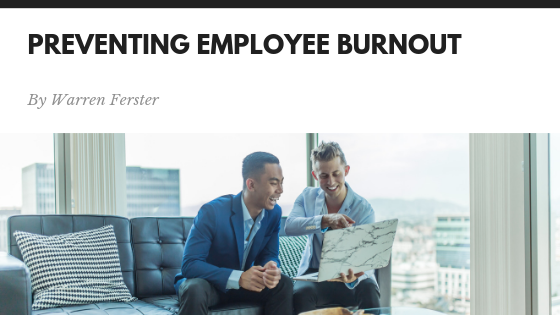“The flame that burns twice as bright burns half as long.”
― Lao Tzu, Te Tao Ching
Though Lao Tzu probably wasn’t talking about employee burnout, his words weigh heavily on the topic. Yes, even your most talented employees can burn out. To ensure the long-term success of the company and it’s employees, good managers need to know how to detect employee burnout and work to prevent it.
Reading the Tea Leaves
Awareness is half the battle. Managers who are paying attention can pick up on the signs of employee burnout before it causes significant damage. Some signs of employee burnout are unusual changes in personality or short-tempered responses, frequent lateness or absenteeism, changes in quality of work or productivity, and declining engagement.
If you notice these changes, have a conversation with the employee. Determine if issues outside of work are affecting them; if not, consider what might be causing them stress at work. Avoid being accusatory. Instead, be solicitous and inquire if you can do anything to help. Chances are if one employee is feeling stressed and overwhelmed, others may be as well. Consider making changes and reflect on management practices that may be causing stress.
There’s a saying in business that it’s often “easier to keep the customers you already have than to attract new ones.” The same can be said for talented employees.
Averting the Crisis
If you discover employee burnout, there are some steps you can take to avert a crisis. Here are some ways to prevent employee burnout.
- Have Realistic Expectations – keep an eye on the workload delegated to each employee and make sure assignments balance with the capabilities of the individual employees.
- Provide Consistent Feedback – be clear and consistent with your feedback. Make sure to show appreciation and recognize employees for their efforts.
- Be Flexible – if an employee wants to learn a new aspect of the business or is looking for a challenge, consider temporary or permanent changes of assignment. Advocate for flexibility of employees’ schedules and company time-off policies, consider allowing employees to work from home.
- Encourage Vacations – encourage a healthy work-life balance for employees. When employees are on vacation, avoid contacting them. Allow them to truly unplug and discourage email or phone check-ins.
- Consider Employee Comfort – if employees are physically uncomfortable, they’re less likely to be productive. Can you make adjustments to the physical environment? Be willing to rearrange seating, or make adjustments in temperature or lighting. Some employees may be more sensitive to noise levels than others. A willingness to make adjustments to the physical environment goes a long way in ensuring employees’ physical comfort.
You may not be able to control every stressor your employees face, but managers certainly have control over their own management practices. The costs of employee burnout are too high to ignore. Good leadership involves taking care of your team members and ensuring they’re not overwhelmed to the point of exhaustion and burnout.

